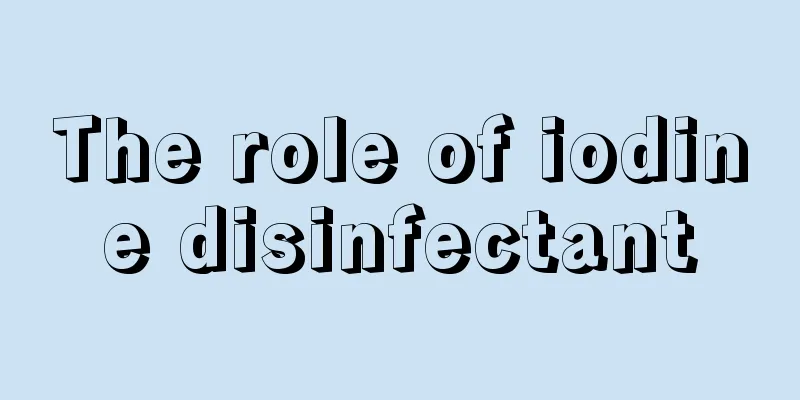What is the difference between cassava and yam

|
Although cassava and yam have different names, they look similar and many people cannot tell them apart. In fact, cassava has a rough appearance and a dark color, while yam has a smoother skin and small black spots where the roots are broken. Cassava may be easier to break, but yam cannot. In addition, yam contains a lot of fiber. This article will briefly introduce the differences between cassava and yam. Cassava, also known as South Asian yam, sweet yam, and manioc, is a tuberous root of the Euphorbiaceae family. Mainly distributed in tropical areas. It is a shrub-like perennial crop. The stem is erect, woody, 2-5m high, with simple leaves alternate, deeply palmately lobed, papery, and lanceolate. Unisexual flowers, panicles, terminal, monoecious. Cassava was introduced to China in the 1820s and was first cultivated in Gaozhou, Guangdong Province, and then introduced to Hainan Island. It is now widely distributed in southern China, with the largest cultivation in Guangxi, Guangdong and Hainan. It has also been introduced and trial-planted in the southern regions of Fujian, Yunnan, Jiangxi, Sichuan and Guizhou provinces. Yam, also known as Dioscorea batatas, wild yam, mountain yam, Huaishan, and white yam, is an herbal medicine included in the "Chinese Materia Medica". Its medicinal source is the dried rhizome of the Dioscoreaceae plant Dioscorea batatas. Yam has the effects of nourishing and strengthening, aiding digestion, restraining sweat and stopping diarrhea. It is mainly used to treat spleen deficiency diarrhea, lung deficiency cough, diabetes thirst, frequent urination, spermatorrhea, leucorrhea in women and chronic enteritis with indigestion. Yam is best taken with Ganoderma lucidum, which has the effect of preventing and treating diabetes. Yam has great development prospects in the food industry and processing industry. Difference Between Cassava and Yam 1. The appearances of cassava and yam are different. The appearances of cassava and yam are very different. The appearance of cassava is darker in color and gives people a rough feeling. The surface of yam is relatively smooth, with some roots on its skin and some small black spots left when the roots are broken. 2. The textures of cassava and yam are different. The textures of cassava and yam are also very different. The fiber content in cassava is much higher than that in yam, so it takes a lot of time and effort to break it. The fiber content in yam is relatively low, and the texture is a bit brittle, so it will break easily with your hands. 3. Yam contains mucus and cassava is poisonous. There is a large amount of natural mucus in yam. After removing its skin, people can feel sticky. Its flesh is relatively tender, but non-toxic and safe for human consumption. Cassava does not contain natural mucus. At the same time, it is also a toxic substance. People cannot eat it raw, otherwise symptoms of poisoning will appear. However, the toxicity of cassava will disappear after encountering high temperature, which means that it is safe for people to eat cooked cassava. |
<<: Cassava flour and glutinous rice flour
>>: What is the blood alcohol content considered drunk driving
Recommend
What are the liver disease prevention and treatment guidelines?
The liver is a very important organ in the human ...
Tap water is a shock, purified water can easily cause cartilage
This is how the story goes: In 1997, a highly edu...
Everyone should learn more about how to prevent colorectal cancer
At present, the probability of young people suffe...
What are the ways to control flies
Compared with mosquitoes, the arrival of flies is...
How long can you live with pain all over your body in the late stage of lung cancer?
The body pain of patients with advanced lung canc...
Dietary taboos for colon cancer
Many parts of the body are prone to cancer, and t...
Acne around the mouth
Many people have acne around their mouths, but do...
Can patting the inside of your arms help detoxify?
Patting the inside of your arms will not detoxify...
What should I do if canvas shoes rub my feet?
Newly bought canvas shoes are pulpy and hard all ...
What is canthal malignant melanoma
What is canthal melanoma? 1. Malignant melanoma a...
What color breast milk is the most nutritious?
Every mother loves her baby very much in her hear...
What to do if you have stomachache after drinking cold beer
Beer is a kind of alcoholic beverage that is deep...
Is it normal to have 1 hour of deep sleep a day?
Everyone knows that as people age, the amount of ...
Migratory abdominal pain
When migratory abdominal pain suddenly occurs, pa...
What are the effects of sand onion? Be careful of these taboos
Sand onion is a very common delicacy. After being...









